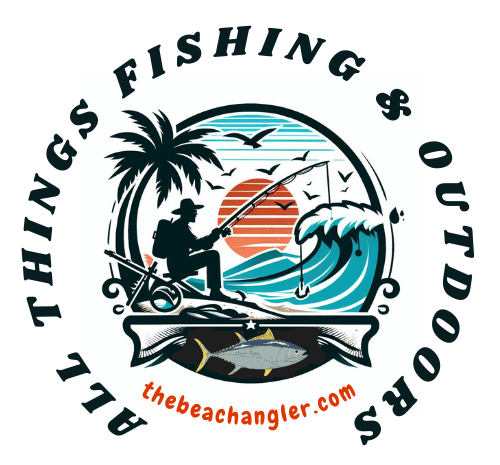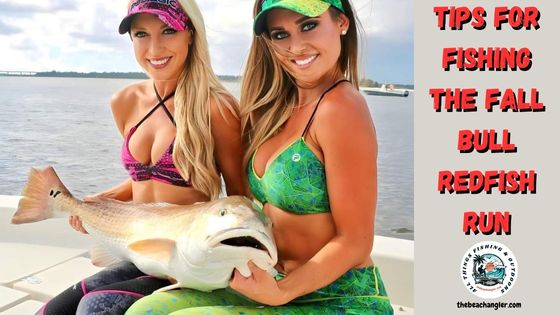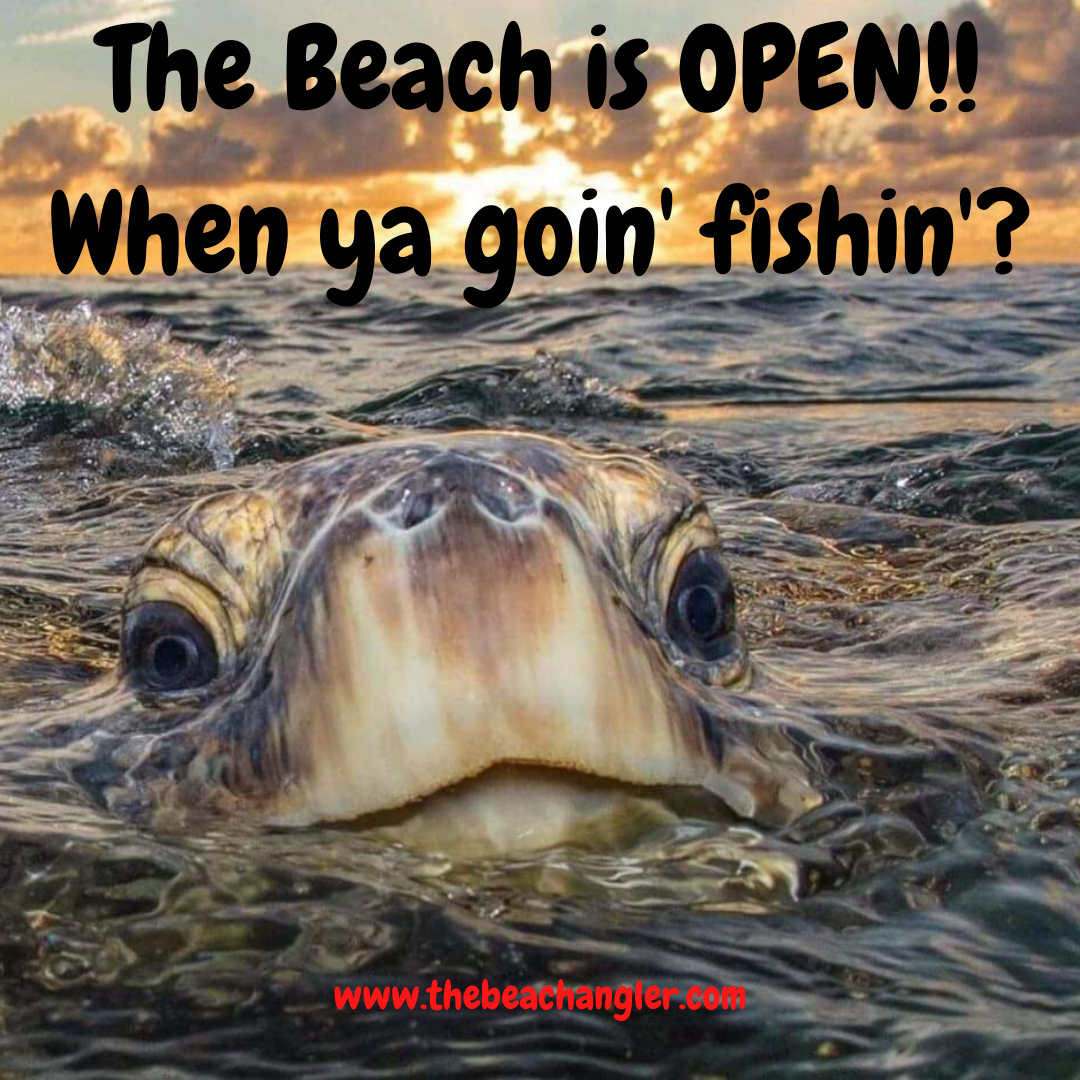Bull redfish, also known as red drum, are the oversized spawning fish with a unique migration pattern that peaks during the fall months. As the water temperatures drop with the changing seasons, these massive fish move from their summer habitats in bays and estuaries to offshore coastal areas to spawn, making them more accessible to anglers.
QUICK LOOK:
Each fall big bull redfish migrate from the bays and estuaries out through the passes and into the nearshore waters to feed and spawn. They will often run in large schools making for some fast and furious action. Focus your efforts on the passes, channels, and jetties as well as the deeper guts along the beachfront. Setting yourself up with medium to medium-heavy gear, the proper rigs, and bait, and paying close attention to the tides, weather, and signs of feeding activity will increase your odds of getting in on the action.
Cooling water temperatures act as a cue for bull redfish to start their annual spawning migration. They seek cooler water temperatures and abundant forage in the surf and offshore. The convergence of these conditions means that fall is prime time for anglers to catch these impressive fish as they gather in large schools.
During the fall run, you’ll find bull redfish congregating in various coastal areas. Beachfronts, passes, jetties, nearshore reefs, and oil platforms are all prime spots to locate these fish. Experienced anglers often look for signs such as increased baitfish activity or birds diving into the water – these are clear indicators that redfish are nearby.
To improve your chances of successfully locating bull redfish, pay close attention to these telltale signs. When you spot birds diving or schools of baitfish breaking the surface, there’s a good chance big bull redfish are feeding in the area. Being in the right place at the right time is half the battle in catching these giants.
Best Times to Fish for Bull Redfish
Fall offers specific windows of opportunity when targeting bull redfish. One key factor is the time of day. Early mornings and late afternoons are prime. During these periods, redfish are more active, making them easier to catch.
The low light conditions also make bait presentation more effective, the fish will be keying more on their senses of smell and taste so anglers casting natural baits at these times often see better results.
Tidal movement is another crucial element. Bull redfish feed actively during tidal changes. Incoming and outgoing tides stir up the bottom, displacing food sources and often washing baitfish out cuts and rips along the beachfront where hungry bull redfish wait to feed.
If you target bull redfish during these strong tidal movement periods, you’re more likely to find hungry fish ready to bite. Keep an eye on the tide charts, and plan your fishing trips around these movements for optimal results.
Fall redfish runs peak between September and November. These months typically offer the best combination of cooling water temperatures and the annual finger mullet migration in Texas is at its peak as well which are a primary food source for big bull redfish. However, weather patterns can influence this timing.
Cold fronts, in particular, can speed up or delay the migration slightly, so staying updated on local weather conditions is essential. Adapt your fishing plans based on the weather to maximize your chances of hitting the perfect window.
Gear and Tackle for Bull Redfish
Having the right gear is essential for successfully landing bull redfish. Medium-heavy to heavy rods, ranging from 7 to 12 feet, are ideal depending on where, and how, you will be fishing. These rods provide the strength needed to handle the powerful runs of big redfish and offer a good balance between casting distance and control.
Your reel choice should complement the rod. Go for reels with a strong drag system in the 5000–8000 series range. These reels have the line capacity and drag strength to battle large redfish, especially in surf conditions where the fish can make long, powerful runs.
When it comes to fishing line, braided line (30-50 lb test) is a solid choice. Its strength and sensitivity make it suitable for detecting bites and fighting big fish. Pair this with a fluorocarbon or monofilament leader to prevent break-offs, as redfish have abrasive mouths and often inhabit areas with rocks, shells, and barnacles that can cut your line.
Hooks and rigs play a significant role, too. Circle hooks in the 4/0 to 7/0 size range are highly recommended for catch-and-release fishing, as they reduce the chances of deep hooking. Fish finder rigs and Carolina rigs work well in surf conditions, as they keep your bait in place and help present it naturally. Using heavier weights can also assist in anchoring your bait in the surf or channel, preventing it from being swept away by the current.
Setting up your tackle using these guidelines will ensure you’re ready for the fight bull redfish put up. It’s about balancing strength, sensitivity, and practicality to give yourself the best shot at landing these impressive fish.
Best Bait for Targeting Bull Redfish
Selecting the right bait can make all the difference when targeting bull redfish. Live and cut bait are both effective, but each has its unique advantages. Live bait like mullet, menhaden, and blue crabs offer a natural presentation that redfish find irresistible.
Cut bait is another excellent option, especially in surf conditions. Using chunks of mullet, menhaden, or ladyfish can release strong scents in the water, drawing redfish toward your rig. This is particularly useful when fishing near the bottom, where bull redfish often feed, or in murky water conditions.
Artificial lures are also worth considering. Large soft plastics, spoons, and swimbaits in natural colors can be very effective. When using artificial lures, retrieve them slowly to mimic the movement of injured baitfish or crabs. This can entice redfish to strike, thinking they have an easy meal.
Of course, fresh dead shrimp will catch bull redfish but also you will have to deal with a lot of non-target species like hardhead catfish. Synthetic baits like fish gum and fishbites also work well if other natural baits are hard to come by.
Experimenting with different baits can help you determine what the redfish are biting on any given day. Having a variety of bait options at your disposal ensures that you’re prepared for whatever the conditions throw at you.
Best Places to Fish During the Fall Bull Redfish Run
The following destinations provide both easy access to productive fishing grounds and a wide variety of options for anglers targeting bull redfish in the fall. For catching bull redfish during the fall run, certain areas at each location are more productive depending on local conditions. Here’s where anglers should concentrate their efforts at these locations:
1. Venice, Louisiana – Known as the “Redfish Capital of the World”, Venice offers incredible opportunities during the fall run.
- Marshes & Inlets: Focus on shallow marshes and the inlets of the Mississippi River Delta where bull redfish congregate to feed.
- Passes: The deeper passes and channels leading from the river to the Gulf are prime spots for bigger bull reds.
2. Port Aransas, Texas – A popular destination on the Texas Gulf Coast, Port Aransas boasts jetties and surf fishing spots where bull redfish gather during the migration season.
- Jetties: The Port Aransas jetties are a hotspot for bull redfish, especially as they move in from offshore to spawn.
- Surf: Fishing along the beach, especially around structure, can also yield big reds.
3. Cape Hatteras, North Carolina – A renowned location for catching big bull reds, Cape Hatteras is famous for its surf fishing. The Outer Banks area attracts anglers from all over during the fall run.
- Surf: Surf fishing is highly productive here, with the bull redfish moving close to shore. Target areas where sandbars meet deeper water.
- Inlets: Inlets and tidal pools are also key spots as redfish follow baitfish through these areas.
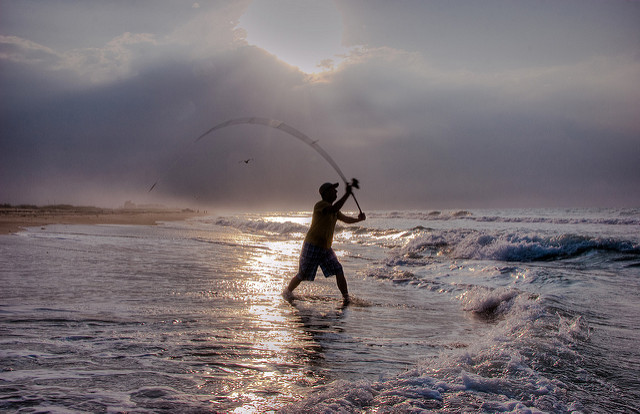
4. Biloxi, Mississippi – The barrier islands and nearshore waters around Biloxi make it a prime spot for fall redfish action. Bull redfish are often found in large schools off the coast.
- Barrier Islands: Fishing around the barrier islands off the coast provides access to deeper channels and productive feeding grounds for bull reds.
- Nearshore Waters: Bull redfish often stay close to shore in the fall, so targeting nearshore waters and passes is effective.
5. Galveston, Texas – Galveston offers diverse fishing options, from surf fishing along the beaches to jetty fishing. Bull reds congregate near the passes and deeper channels in the fall.
- Jetties: Galveston jetties are famous for producing large bull reds, especially during their fall migration.
- Surf & Passes: The beaches and passes, such as San Luis Pass, offer great surf fishing opportunities for bull reds.
6. Chesapeake Bay, Virginia – The lower Chesapeake Bay sees large schools of bull redfish moving through during their migration. Inlets, bridges, and piers are all productive spots.
- Inlets: The lower Chesapeake inlets, like Rudee Inlet, are prime fishing spots as bull redfish move in from deeper waters.
- Bridges & Piers: Fishing near bridges and piers where current flow is strong often attracts big reds.
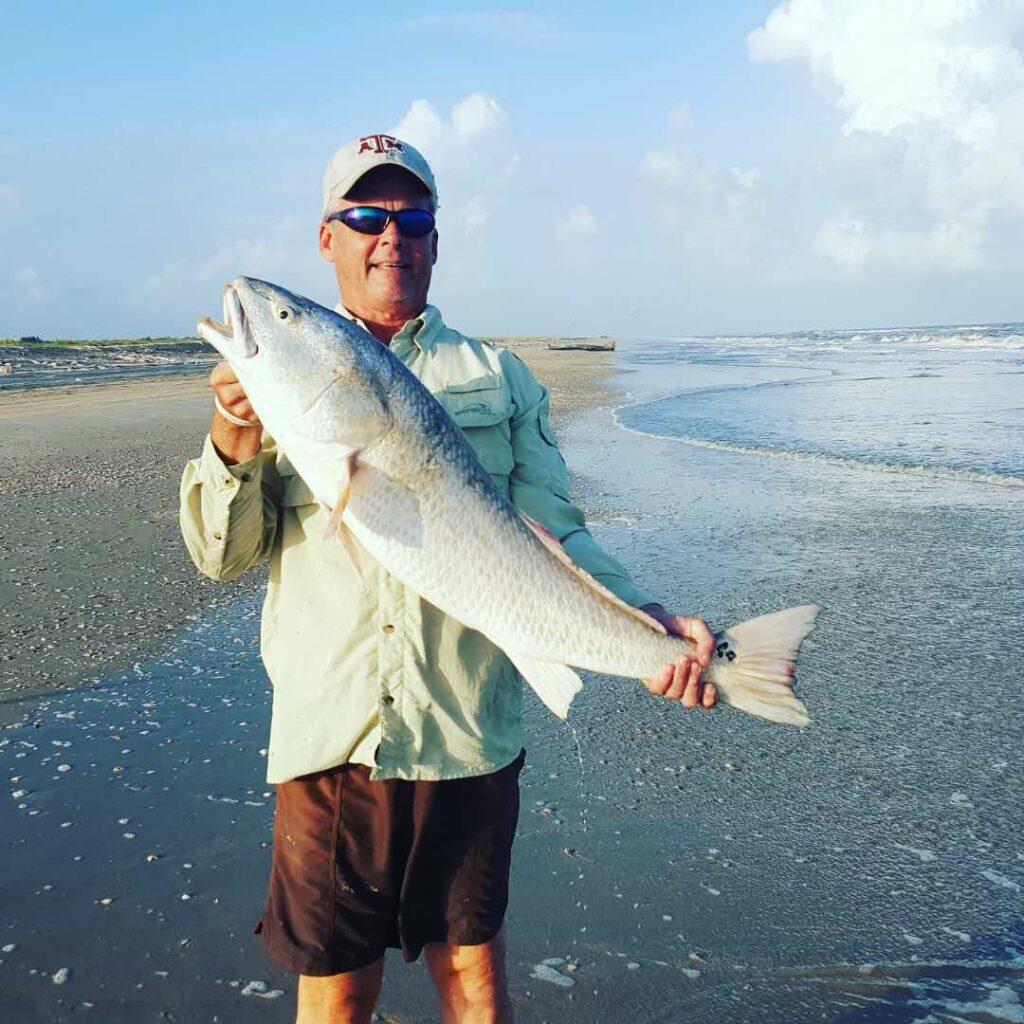
7. St. Augustine, Florida – This historic Florida town offers excellent fall fishing in the nearby Matanzas Inlet and surrounding saltwater marshes where bull reds are known to gather.
8. Sabine Pass, Texas/Louisiana Border – The Sabine Pass area, located on the Texas-Louisiana border, is another great spot for targeting bull redfish, with productive fishing along the jetties and in the bay.
- Jetties: The jetties at Sabine Pass are key for catching bull reds as they move between inshore and offshore waters.
- Beaches: Surf fishing can also be productive, especially around cuts and channels where reds come close to shore.
By concentrating on these specific areas, anglers can greatly improve their chances of hooking into a big bull redfish during the fall run.
Key Strategies for Bull Redfish from the Beach
Understanding the surf and identifying key structures is vital when fishing for bull redfish from the beach. Look for sandbars, cuts, and troughs in the surf. These features create natural pathways and feeding areas for redfish. Casting near these structures can significantly increase your hookup rate.
Casting distance plays a crucial role as well. Getting your bait beyond the breakers can be essential. Longer rods, around 10 to 12 feet, are ideal for achieving greater casting distances. Using proper casting techniques will help you place your bait where the fish are feeding.
Patience is a virtue when fishing for bull redfish from the shore. Schools of redfish often come in waves, meaning there can be periods of inactivity followed by sudden bursts of action. Stay ready, as multiple hookups can occur when a school passes through your area.
Persistence is equally important. Continuously monitoring the surf and adjusting your position based on the activity you observe can make a big difference. Be adaptable and stay alert to the conditions around you, and don’t be afraid to move to another area if you’re not getting bit.
Latest Techniques and Tactics for Bull Redfish
Innovation in fishing has introduced several new techniques that can give you an edge in the fall bull redfish run. One such technique involves using drones for bait placement. By attaching your bait to a drone, you can drop it much farther out beyond the breakers than you could cast. This method allows you to reach redfish that are feeding further offshore, increasing your chances of success.
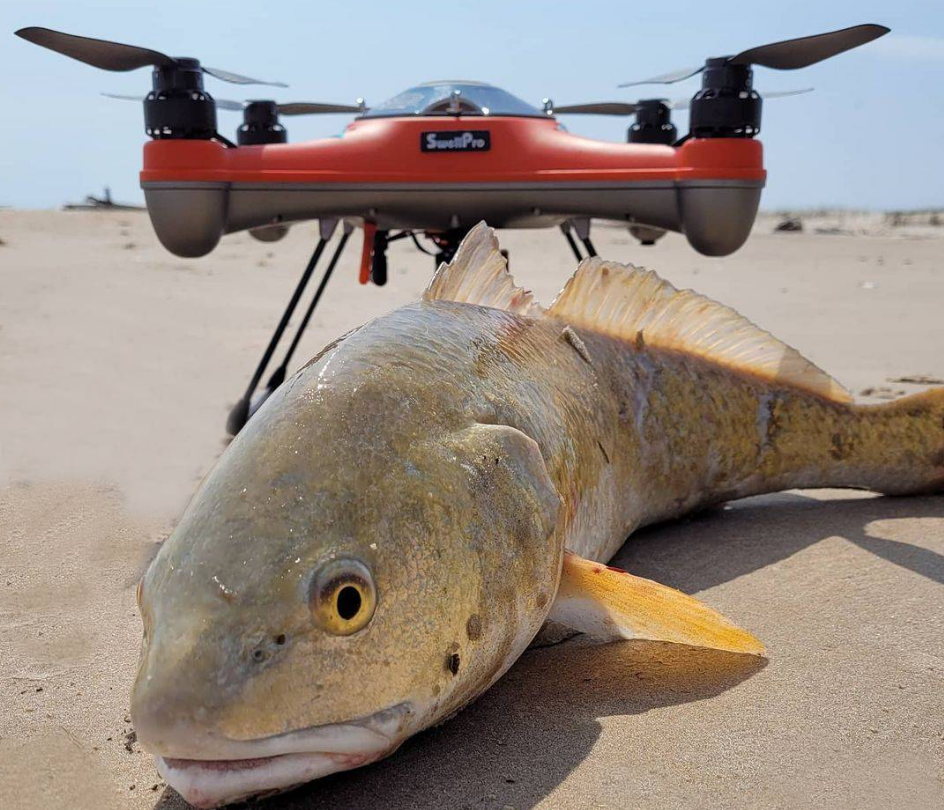
Another effective method is kayak-assisted fishing. Using a kayak, anglers can place baits in deeper waters near the surf or even on the other side of the breakers. A kayak provides mobility and access to areas that are difficult to reach from the shore, making it a valuable tool in your fishing arsenal.
Radio-controlled bait boats are also being used to carry baits off the beach to reach fish beyond your normal casting distance. Chumming is a technique that can also draw bull redfish closer to shore.
By using cut bait or fish oil, you can create a scent trail that entices redfish to investigate. Chumming works well when combined with other techniques, helping to concentrate fish in your fishing area. These modern tactics, when used correctly, can improve your fishing success.
Bull Redfish Conservation and Sustainable Fishing
Bull Redfish are not great as table fare, and they are the spawners, so they are best for catch-and-release fishing. Handling bull redfish carefully ensures their survival after release. Using proper catch and release techniques can make a big difference.
Always use wet hands or a landing net to minimize stress on the fish. If you use a net, make sure it’s a rubber-coated one to avoid removing the fish’s protective slime layer. A good fish lip gripper like a boga grip is another good option for handling bull redfish.
Circle hooks are highly recommended. These hooks tend to hook the fish in the corner of the mouth, making it easier to remove and reducing potential injuries. Avoid prolonged fights to ensure the fish isn’t overly exhausted, which can decrease its chances of survival once released.
Knowing the legal limits and size restrictions for redfish in your area is crucial. Regulations exist to maintain healthy fish populations and ensure future generations can enjoy the same fishing experiences. Adhering to these limits helps conserve the fishery and supports sustainable fishing practices.
Respecting local laws and fishing ethically is not just about following rules; it’s about ensuring that we leave a healthy marine ecosystem for others to enjoy. By practicing responsible fishing, you’re contributing to the overall health and sustainability of the redfish population.
Get Out There and Catch the Bull Redfish Run
Successfully targeting bull redfish during their fall migration involves a mix of timing, knowledge, and proper gear. From understanding their migration patterns to using the latest fishing techniques, every detail counts. Gear up with the right rods, reels, and baits to make the most of your fishing experience.
Keep an eye on the tide and time of day to optimize your chances, and don’t shy away from modern tactics like using drones or kayaks. Remember, patience and persistence are key. When it all comes together, the thrill of landing one of these giants is unmatched.
Key Takeaways:
- Grass flats and mangroves are excellent spots for shallow-water fishing as redfish feed heavily in these areas just before starting their fall migration.
- Jetties and passes are productive for targeting bull redfish as they funnel fish moving between inshore and offshore waters.
- Surf fishing near structure or deeper drop-offs can yield large reds.
- Inlets and creeks are ideal for targeting bull redfish chasing baitfish during tidal movements.
Lastly, always prioritize ethical fishing practices. By handling redfish with care and complying with local regulations, you’re helping to preserve the fishery for future generations. Share your stories and bull redfish insights with fellow anglers by leaving your comments and experiences in the comment section below. We’d appreciate it!
As always, stay safe, enjoy the journey and please try to leave it cleaner than you found it. If you have any comments, questions, ideas, or suggestions please leave them in the comment section below and I’ll get back to you ASAP. You can follow us on Facebook: Rex The Beach Angler, Instagram: thebeachangler7, Twitter: @AnglerBeach, and YouTube: Man Art Creations.
- Are Drones Legal For Fishing?
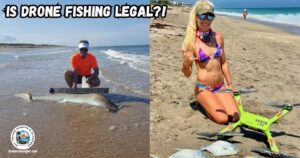
- Bulls And Pomps From The Winter Surf
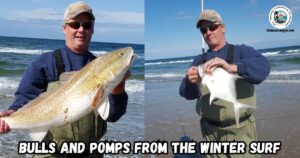
- Tips And Tactics For Wintertime Speckled Trout Fishing
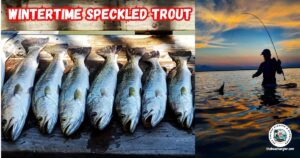
- 9 Croaker Soakin’ Tips For Big Speckled Trout
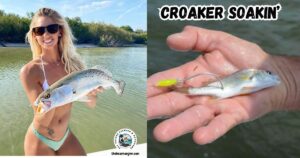
- 15 Weather And Surf Apps For Fishing
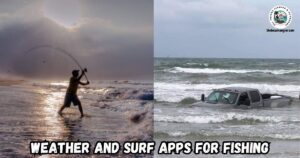
- Timing And Weather Windows For Winter Surf Fishing
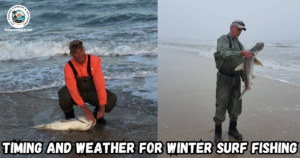
P.S. – Thanks so much for checking out our blog we really appreciate it. Just so you know, we may receive a commission if you click on some of the links that appear on our site. This helps us keep our content free and up-to-date for everyone. We appreciate your support!
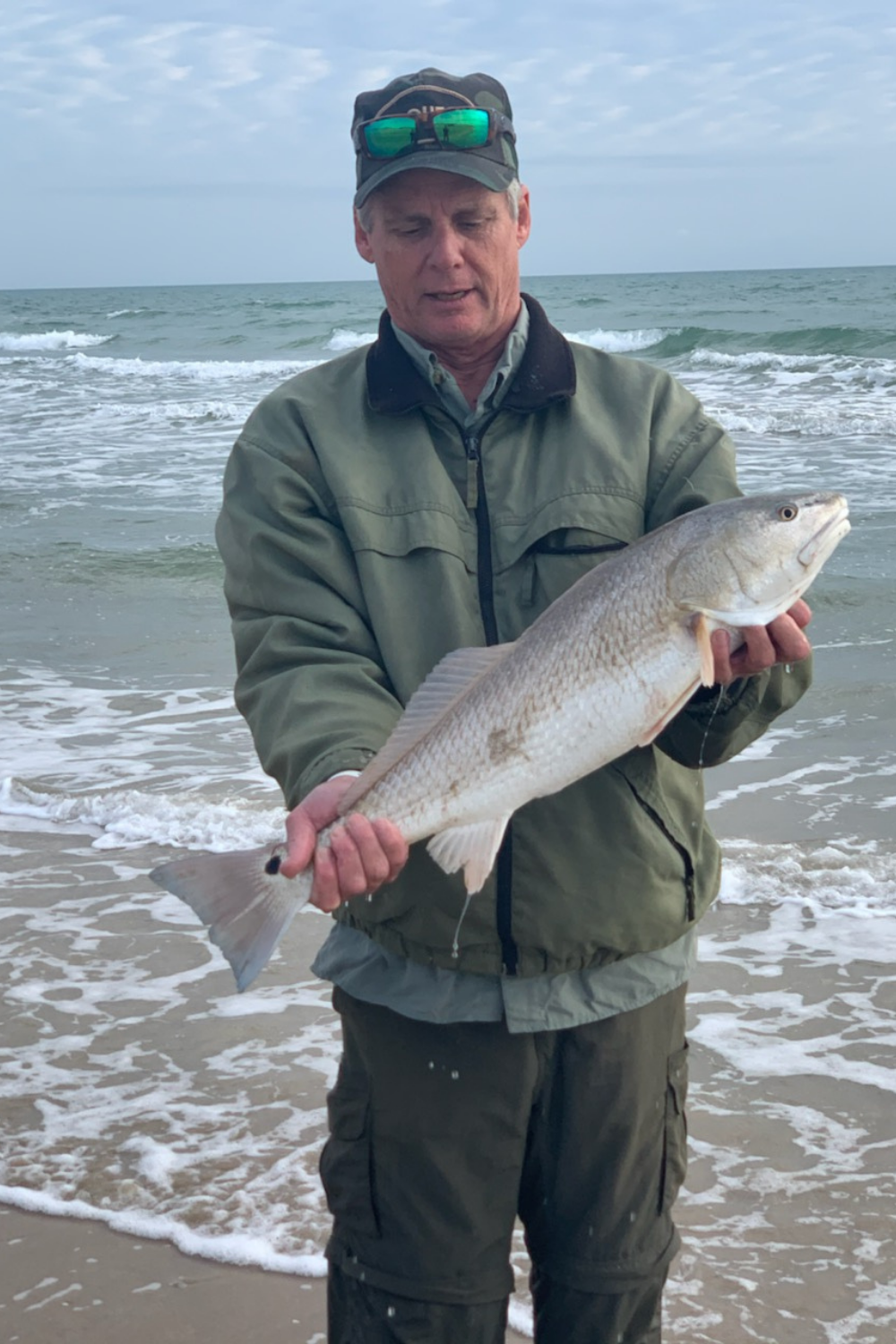
A life long surf fisherman with 50+ years of experience, I am also an avid hunter and outdoorsman. I will be sharing my passion for the outdoors with you so be prepared for hunting, fishing, camping, hiking and more. Along with gear reviews and the latest trends and innovations in the outdoor industry.
